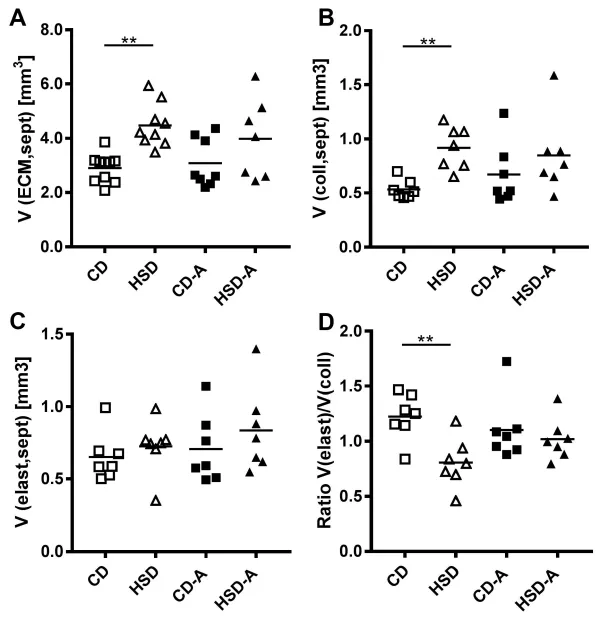Hollenbach, J., Lopez-Rodriguez, E., Mühlfeld, C., Schipke, J.: Int J Mol Sci. 2019;20(10).
To access the full article, click here:

Diabetes and respiratory diseases are frequently comorbid conditions. However, the mechanistic links between hyperglycemia and lung dysfunction are not entirely understood. This study examined the effects of high sucrose intake on lung mechanics and alveolar septal composition and tested voluntary activity as an intervention strategy. C57BL/6N mice were fed a control diet (CD, 7% sucrose) or a high sucrose diet (HSD, 35% sucrose). Some animals had access to running wheels (voluntary active; CD-A, HSD-A). After 30 weeks, lung mechanics were assessed, left lungs were used for stereological analysis and right lungs for protein expression measurement. HSD resulted in hyperglycemia and higher static compliance compared to CD. Lung and septal volumes were increased and the septal ratio of elastic-to-collagen fibers was decreased despite normal alveolar epithelial volumes. Elastic fibers appeared more loosely arranged accompanied by an increase in elastin protein expression. Voluntary activity prevented hyperglycemia in HSD-fed mice. The parenchymal airspace volume, but not the septal volume, was increased. The septal extracellular matrix (ECM) composition together with the protein expression of ECM components was similar to control levels in the HSD-A-group. In conclusion, HSD was associated with elastic fiber remodeling and reduced pulmonary elasticity. Voluntary activity alleviated HSD-induced ECM alterations, possibly by preventing hyperglycemia.




